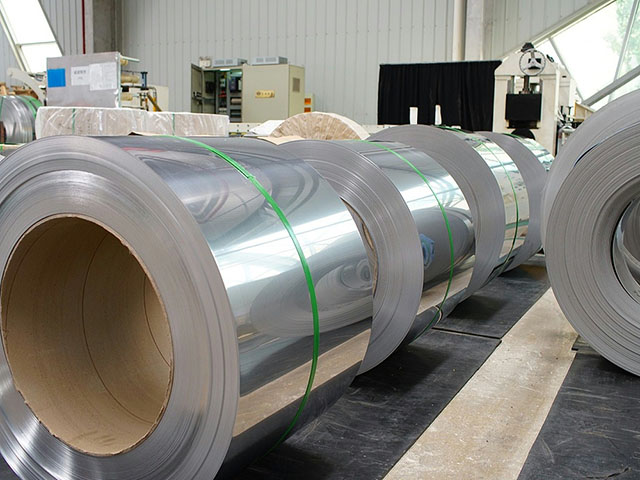Users often ask which type of stainless steel is best? Actually, there’s no definitive answer to this question. The key to determining which stainless steel is best depends on the intended application. Some stainless steels are corrosion-resistant, while others are heat-resistant. The performance depends on the intended use. In this article, we’ll analyze 304 and 430 stainless steel.

304 stainless steel, known in the stainless steel industry as “stainless steel,” offers excellent corrosion resistance and superior thermal conductivity compared to austenitic stainless steel. It’s currently primarily used in applications such as architectural decoration, some home appliance components, and fuel burner parts, both at room and high temperatures.
However, because 430 stainless steel contains much less chromium than 304, its hardness isn’t as good. However, 430 stainless steel isn’t food-grade stainless steel at all. Moreover, stainless steel is often made by reprocessing recycled scrap iron, steel, lead, and other materials through a series of processes. 430 stainless steel and 304 stainless steel do not qualify as food-grade stainless steel. Only stainless steel certified to the national GB9684 standard and suitable for food contact without posing a health risk is considered food-grade stainless steel.
Regular manufacturers typically use 304 (i.e., 18-8) and 430 (i.e., 18-0) stainless steel for forks and spoons. 430 is magnetic, while 304 is slightly magnetic. Therefore, when purchasing stainless steel tableware, a magnet can easily distinguish between the two.
Food-grade stainless steel products are divided into two categories based on their intended use. One category is tableware containers, which refer to stainless steel utensils used to hold food, such as pots, bowls, and basins. The other category is stainless steel tableware, which typically involves direct food contact with cutlery such as knives, forks, spoons, and chopsticks.
The primary safety concern for food-contact stainless steel is the migration of heavy metals. Generally, stainless steel products do not pose a food safety risk when used to hold, cook, or otherwise come into contact with food. However, when heavy metals migrate from stainless steel products during use, exceeding permitted levels, they may pose a health risk. 430 stainless steel is not food grade. It is a ferritic stainless steel with magnetic properties, commonly known as stainless steel. It is used for knives and other items (wear-resistant and hard). Currently, austenitic stainless steel (non-magnetic or slightly magnetic), such as 201, 202, 301, and 304 (austenitic stainless steels offer excellent corrosion resistance), is generally used for tableware. Therefore, 430 stainless steel is not very safe for use in tableware due to its poor corrosion resistance.
1. Corrosion Resistance
430 stainless steel contains 16.00-18.00% chromium and virtually no nickel. 304 stainless steel contains more chromium and nickel, so 430 stainless steel lacks the corrosion resistance of 304 stainless steel.
2. Stability
430 stainless steel is ferritic, while 304 stainless steel is austenitic. 304 stainless steel is more stable than 430 stainless steel.
3. Toughness
304 stainless steel has very strong toughness, surpassing 430 stainless steel.
4. Thermal Conductivity
The ferrite of 430 stainless steel has better thermal conductivity than the austenite of 304 stainless steel.
5. Mechanical Properties
430 stainless steel incorporates the stable chemical element titanium, resulting in better mechanical properties at welds than 304 stainless steel.
Applications of 430 stainless steel:
1. 430 stainless steel is primarily used for architectural decoration, fuel burner components, household appliances, and home appliance parts.
2. 430 stainless steel, enhanced with the free-machining grade 430F, is primarily used for automatic lathes, bolts, and nuts.
3. 430LX, created by adding Ti or Nb to 430 stainless steel and reducing the carbon content, improves machinability and weldability. It is primarily used in hot water tanks, hot water supply systems, sanitary ware, durable household appliances, bicycle flywheels, and other applications.
430 Stainless Steel
Applications of 304 Stainless Steel:
1. 304 stainless steel features high-temperature resistance, excellent workability, and high toughness, making it widely used in the industrial, furniture, and medical industries.
2. 304 stainless steel has strong corrosion resistance and is widely used in equipment and components requiring excellent overall performance (corrosion resistance and formability).
Summary: 304 and 430 stainless steel each have their advantages.
430 stainless steel has excellent thermal conductivity and mechanical properties, making it a superior choice for architectural decoration, fuel burner components, household appliances, and appliance parts.
304 stainless steel has strong toughness and corrosion resistance, making it a superior choice for industries requiring corrosion resistance, such as industrial, food, and medical.
 Синлихенг из нержавеющей стали
Синлихенг из нержавеющей стали

